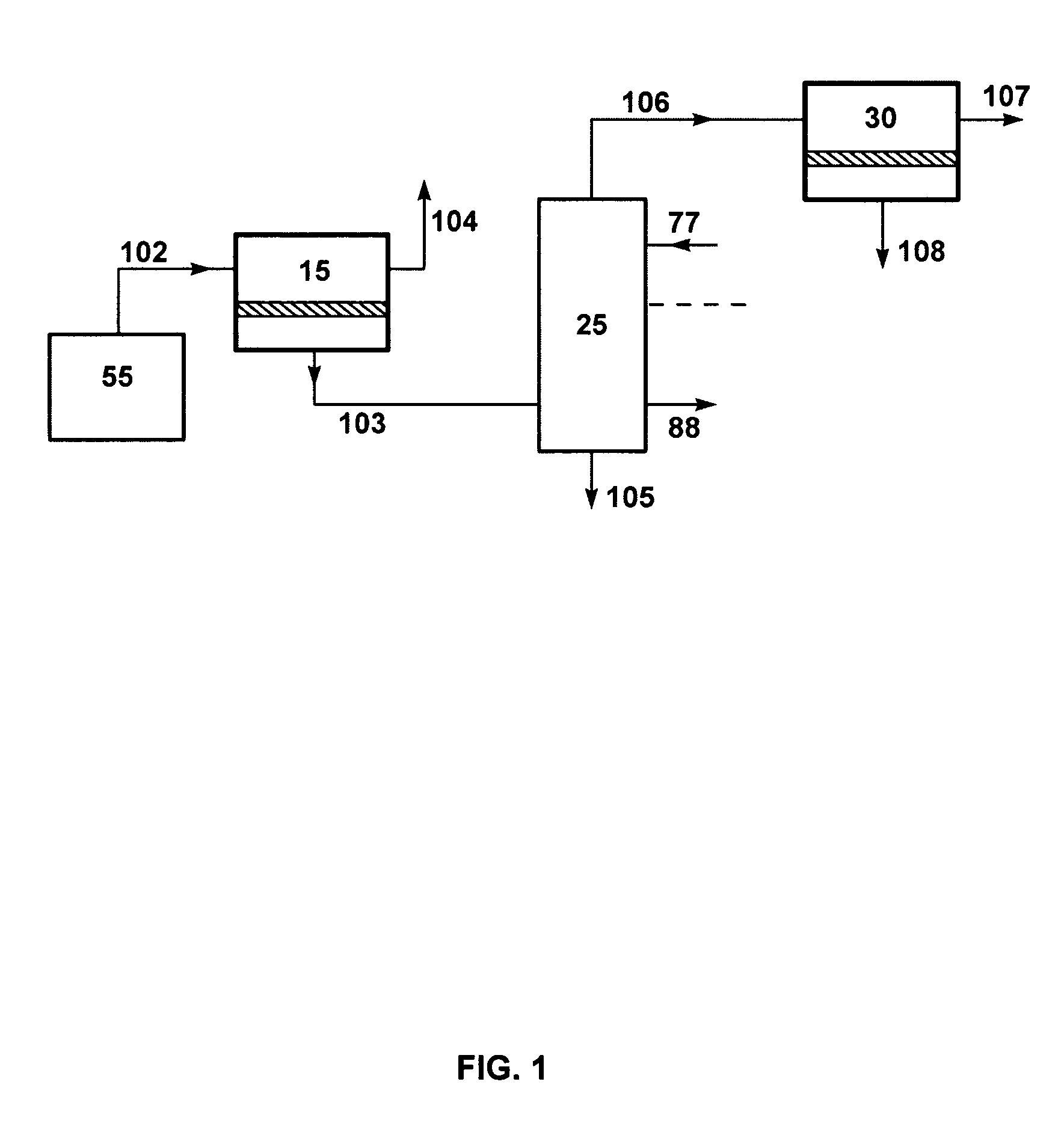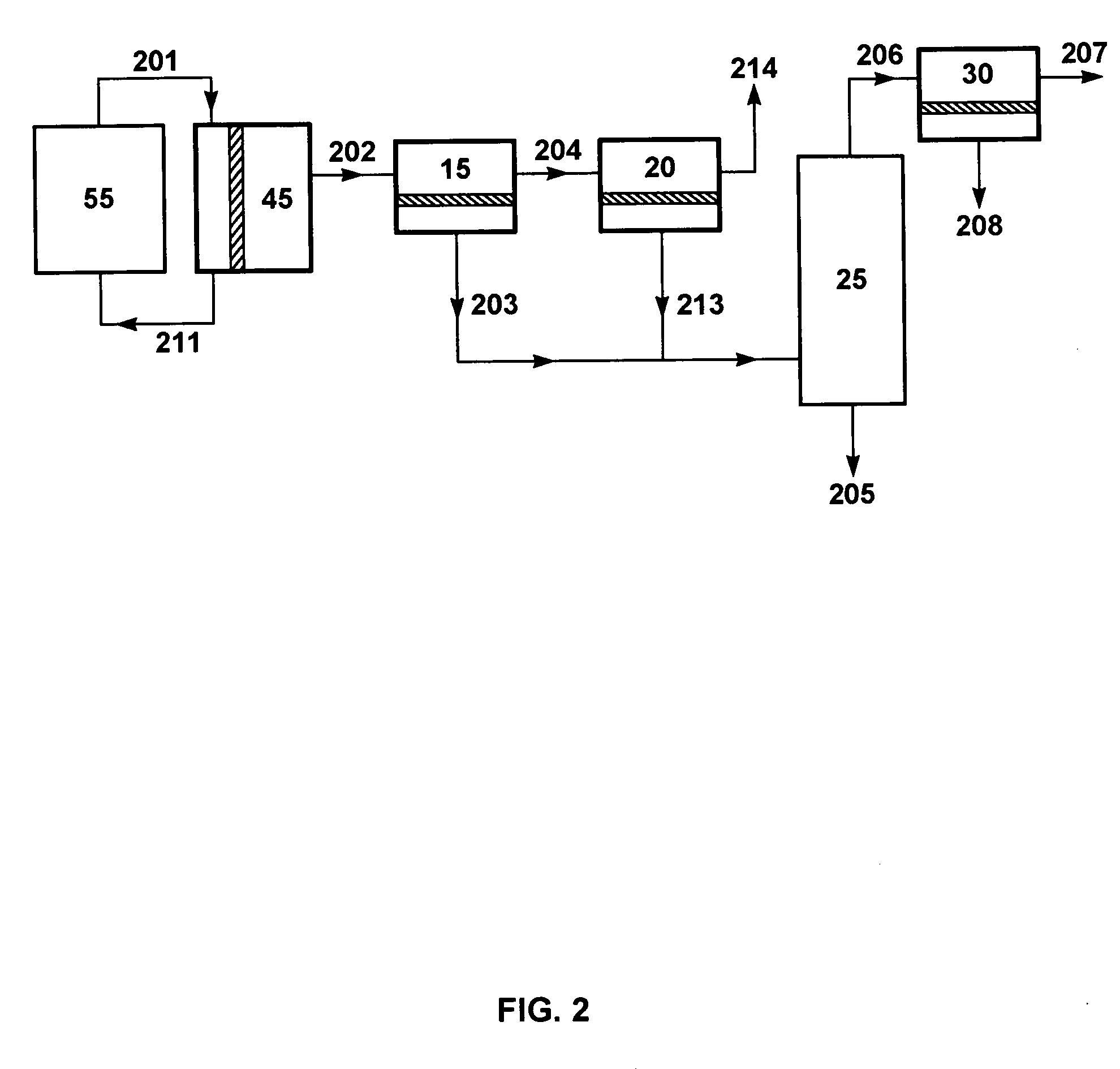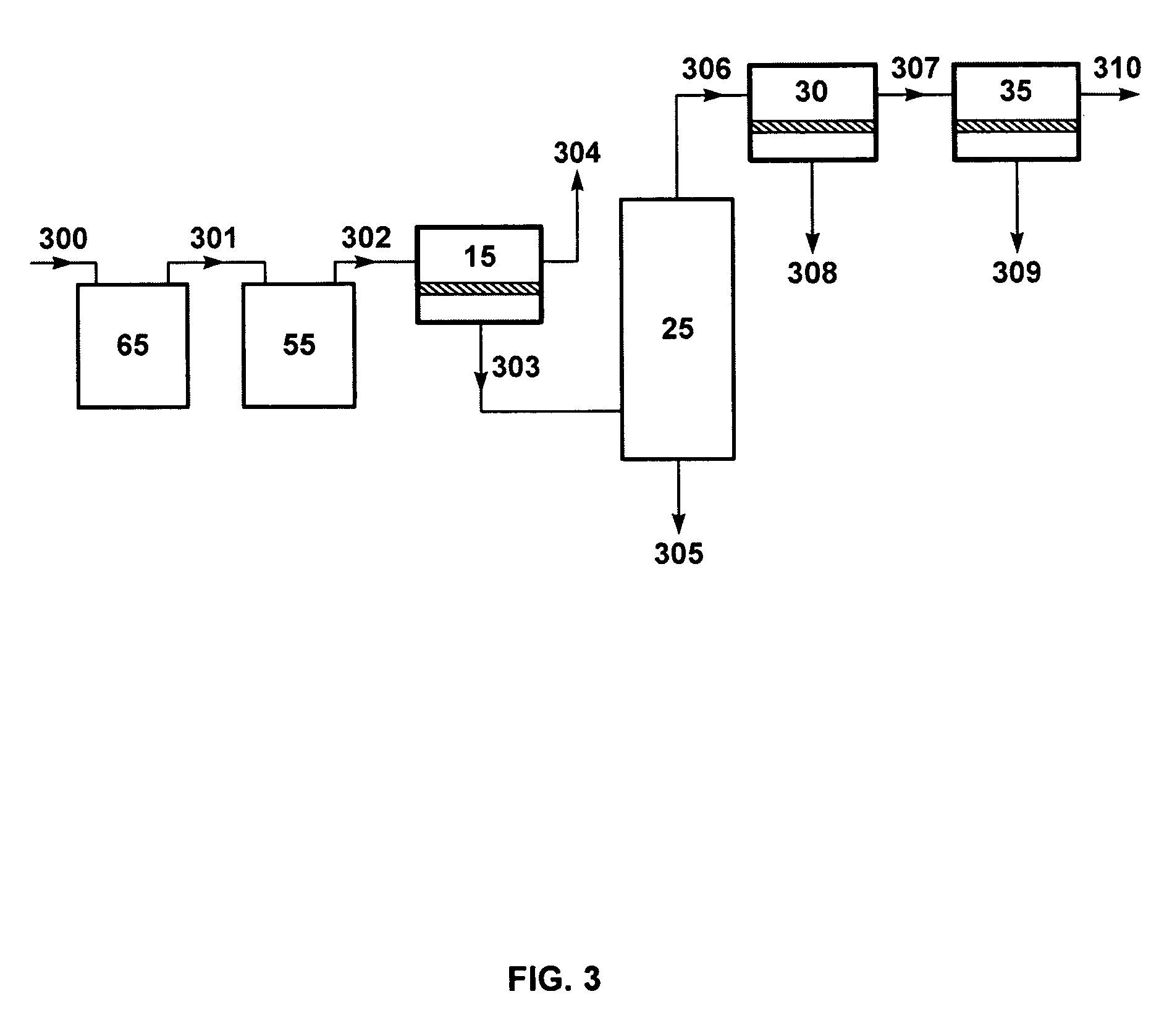Ethanol recovery process
a technology of ethanol recovery and recovery process, which is applied in the direction of separation process, reverse osmosis, membranes, etc., can solve the problems of near-zero net greenhouse gas emissions, design failure, and insufficient fermentable sugar content of materials that comprise feedstock used to produce bioethanol, etc., to achieve low permeation pressure, simplify equipment, and high maintenance components
- Summary
- Abstract
- Description
- Claims
- Application Information
AI Technical Summary
Benefits of technology
Problems solved by technology
Method used
Image
Examples
example 1
Ethanol Removal with Composite Membranes
[0180] Composite membranes were prepared using standard casting and coating techniques. Polyvinylidene fluoride (PVDF) was used as the support in each case.
[0181] One membrane was prepared using polydimethylsiloxane (PDMS) as the selective layer. Other membranes were prepared using silicalite-1 zeolites available from Zeolyst International (P.O. Box 830, Valley Forge, Pa., 19482) in a PDMS polymer matrix as the selective layer. All membranes were prepared by solution-coating the selective layer onto the support layer to generate the following samples: [0182] Sample 1: PDMS on PVDF [0183] Sample 2: A single coat of 20 wt % solution containing polydimethylsiloxane (PDMS) and zeolite in a ratio of 1:1 was applied to PVDF. The thickness of the selective layer was about 80 μm. [0184] Sample 3: A double coat of 20 wt % solution containing PDMS and zeolite in a ratio of 2:1 was applied to PVDF. The thickness of the selective layer was about 150 μm....
example 2
Ethanol Dehydration with Perfluorinated Composite Membranes
[0187] Commercial membranes were purchased and composite membranes were prepared using standard casting and coating techniques to yield the following samples: [0188] Sample 4: Celfa CMC VP-31 (A commercial polymer membrane from CM Celfa, Switzerland) [0189] Sample 5: 0.5 wt % Cytop® (Asahi Glass Co. Ltd. 1-12-1, Yurakucho, Chiyoda-ku, Tokyo 100-8405 Japan ) and 1 wt % Teflon® AF 2400 (Dupont, 1007 Market St. Wilmington, Del., 19898) on PVDF. [0190] Sample 6: 0.5 wt % Hyflon® (Solvay Solexis, Inc., 10 Leonard Lane, Thorofare, N.J. 08086) and 1 wt % Teflon AF 2400 on PVDF. [0191] Sample 7: 1 wt % Teflon® AF 1600 on PVDF [0192] Sample 8: 1 wt % Teflon® AF 1300 on PVDF
[0193] The membranes were cut into 12.6 cm2 stamps and tested in a permeation test-cell apparatus. thanol / water feed stream containing 7.0 wt % ethanol was introduced to the sample membranes e test cell at a temperature of 75° C. The permeate pressure was maintai...
example 3
Modeling Calculations for Dephlegmator
[0194] A computer calculation was performed with a modeling program, ChemCad V (ChemStations, Inc., Houston, Tex.), to compare the performance of a dephlegmator with and without supplementary heat supply for the separation of a 1,000 kg / h permeate vapor stream containing 30% ethanol, 70% water. The stream was assumed to be at a temperature of 80° C. and a pressure of 0.1 atm, which pressure was assumed to be maintained throughout the dephlegmator.
[0195] The dephlegmator was assumed in both calculations to use heat exchange against a coolant at the top of the column to provide a condensate reflux. In the first calculation, heat energy was assumed to be supplied only by the permeate vapor stream, which has a latent heat of 1.035 kmol.
[0196] In the second calculation, heat energy was also assumed to be supplied by the permeate vapor stream. In this calculation, however, the heat energy was supplemented by a vapor stream from a small reboiler at ...
PUM
| Property | Measurement | Unit |
|---|---|---|
| temperature | aaaaa | aaaaa |
| temperature | aaaaa | aaaaa |
| vapor pressure | aaaaa | aaaaa |
Abstract
Description
Claims
Application Information
 Login to View More
Login to View More - R&D
- Intellectual Property
- Life Sciences
- Materials
- Tech Scout
- Unparalleled Data Quality
- Higher Quality Content
- 60% Fewer Hallucinations
Browse by: Latest US Patents, China's latest patents, Technical Efficacy Thesaurus, Application Domain, Technology Topic, Popular Technical Reports.
© 2025 PatSnap. All rights reserved.Legal|Privacy policy|Modern Slavery Act Transparency Statement|Sitemap|About US| Contact US: help@patsnap.com



